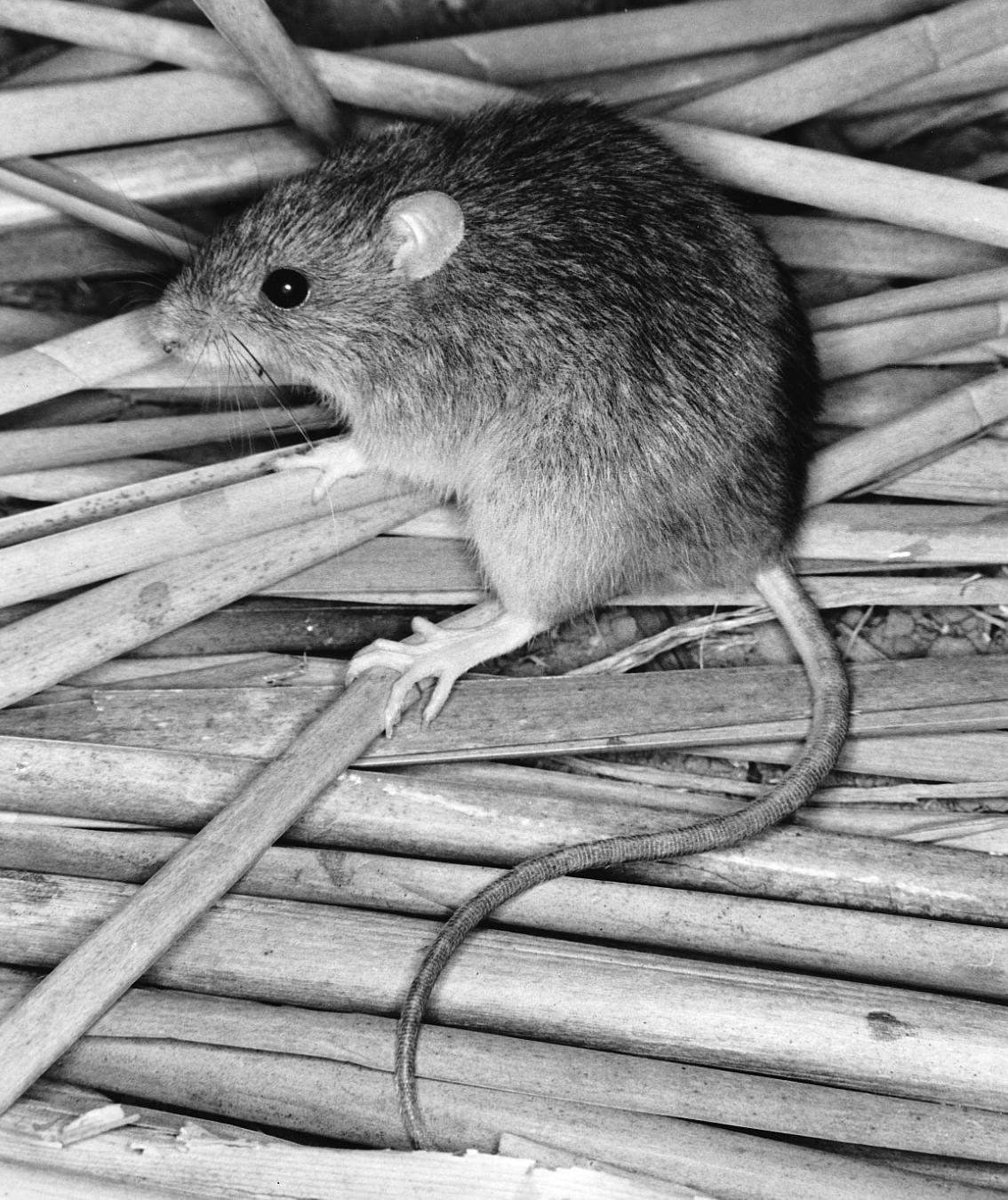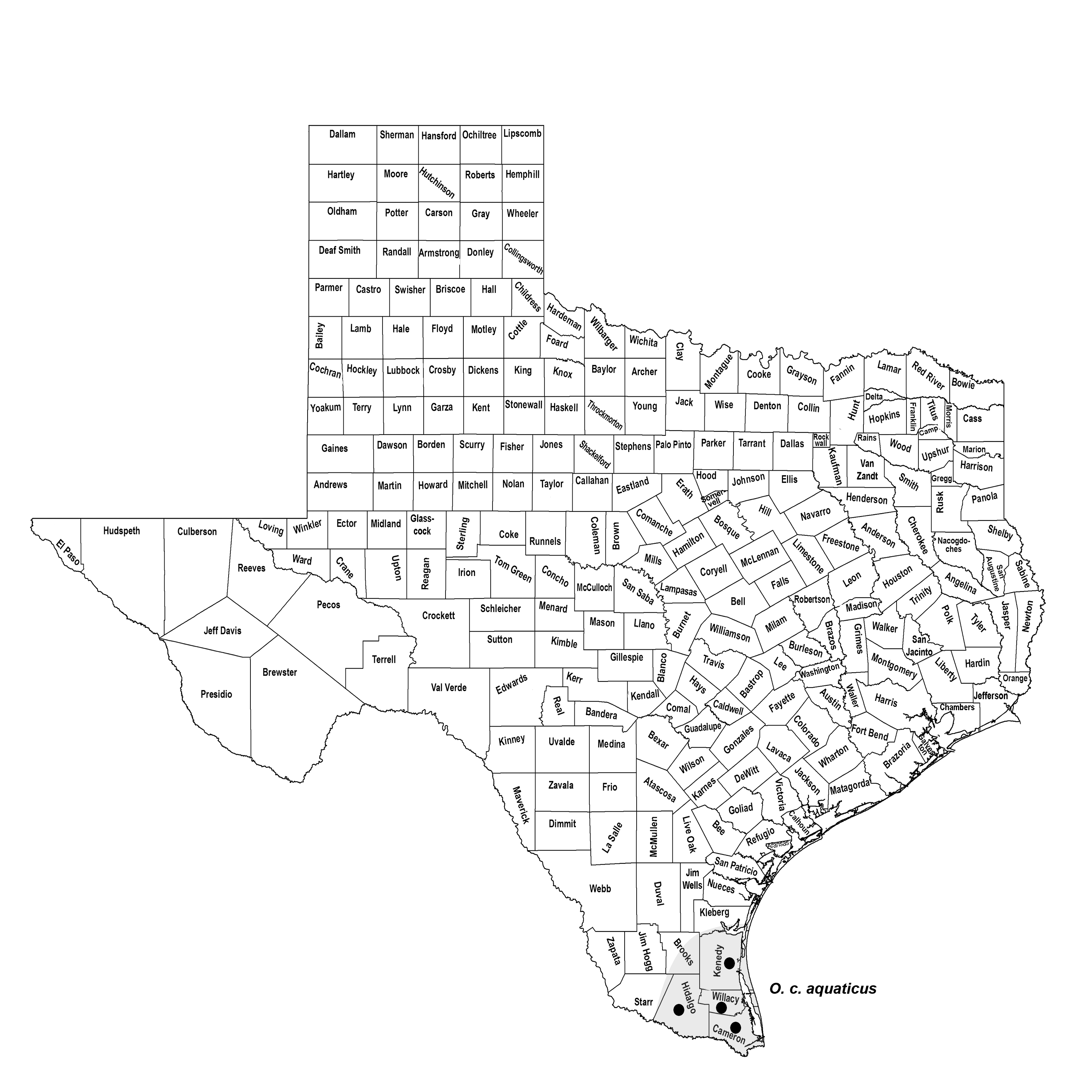COUES'S RICE RAT
Oryzomys couesi (Alston 1877)
Order Rodentia : Family Cricetidae
DESCRIPTION. Similar to O. texensis (formerly O. palustris) but pelage shorter and color ochraceous buffy or ochraceous tawny instead of grayish brown; underparts buffy instead of whitish. Dental formula: I 1/1, C 0/0, Pm 0/0, M 3/3 × 2 = 16. Averages for external measurements: total length, 297 mm; tail, 161 mm; hind foot, 34 mm. Weight, 50–86 g, averaging 65.3 g.

DISTRIBUTION. A Mexican form reaching the United States in the lower Rio Grande Valley in Cameron, Hidalgo, Kenedy, and Willacy counties.

SUBSPECIES. Oryzomys c. aquaticus.
HABITS. Coues's rice rats have been captured in cattail–bulrush marshes and aquatic, grassy zones near resacas (oxbow lakes) in Hidalgo County. Apparently, riparian woodland and subtropical evergreen woodland near the resacas are avoided, or at least inhabited less commonly.
Coues's rice rats build their nests in cattails and small trees near or above water. Nests are constructed of leaves, twigs, small vines, and cattail, all finely shredded and woven into a globular shape. No information is available on the reproductive biology of these rats, nor are their feeding habits known.
POPULATION STATUS. Rare. This species is restricted in occurrence to the grasslands along the southern coast and adjacent inland areas in Cameron, Hidalgo, Kenedy, and Willacy counties. Within its range, Coues's rice rat is further restricted to the resaca habitats that are bordered by cattail–bulrush marshes and subtropical woodlands. This is a species that reaches its northern limits in South Texas.
CONSERVATION STATUS. The IUCN lists Coues's rice rat as a species of least concern, and it does not appear on the federal lists of concerned species; however, it is regarded as threatened in Texas by TPWD. It remains a common, small mammal occurring from Mexico southward to Panama, where it is in no danger of extirpation. Loss of the resaca environment, largely because of drainage for irrigated agriculture, is the primary threat to this species in Texas.
From The Mammals of Texas, Seventh Edition by David J. Schmidly and Robert D. Bradley, copyright © 1994, 2004, 2016. Courtesy of the University of Texas Press.
Natural Science Research Laboratory
-
Address
Museum of Texas Tech University, 3301 4th street, Lubbock, TX 79409 -
Phone
806.742.2486 -
Email
nsrl.museum@ttu.edu

